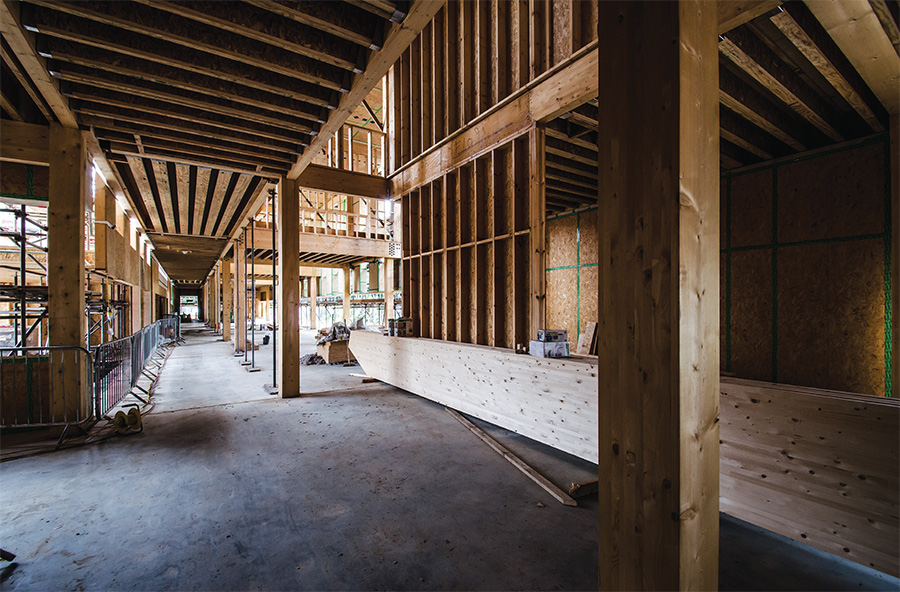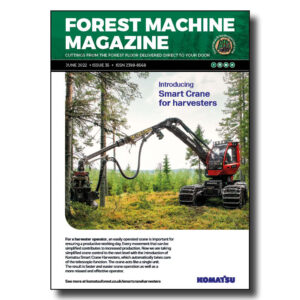After a lengthy consultation on the ban on combustible materials, the UK’S Department of Levelling Up, Housing and Communities has ruled that structural timber is approved for use within the external walls of buildings between 11 and 18 metres.
The government recognised that the proposed reduction of the combustibles ban from 18 metres to 11 metres put forward in the review would have a disproportionate impact on the use of structural timber and that a more ‘nuanced’ approach was required.
This approach is in line with the response from the timber industry, led by the Confederation of Timber Industries working with partners including ACAN, which called for the government to take a risk-based approach, and to focus restrictions on ‘cladding rather than structure’.
In buildings that include a ‘residential’ purpose with a storey of 11m or more in height, elements such as cladding, balconies, and other external surfaces must achieve class A1 or A2-s1, d0. While some exemptions apply, this effectively bans the use of combustible materials for these elements.
These changes to the Building Regulations will come into force on 1 December 2022. In their response to the review, the UK government said:
“Our approach will allow the continued use of structural timber in the external walls of residential buildings below18m if these materials are used safely in accordance with the requirements of the Building Regulations.”
In response to calls for exemptions to be made for the use of structural timber to be used in residential buildings taller than 18 metres, the government said: “We recognise the potential environmental benefits of timber construction where it can be used safely. The case for exempting structural timber from the requirements of the ban in the highest risk buildings (above 18 metres) has been made by some respondents.
The government is not yet satisfied that the case is strong enough to justify an exemption at this time.
“The Department has commissioned research to look at the issue and how the use of modern methods of construction will inform the development of building regulations and any other necessary action.
-
That’s a remarkable amount of work hours for a single machine, the Norcar 600 owned by Erkki Rinne is taken well care of, it even has the original Diesel engine.
-
Kieran Anders is a forestry contractor working in the lake district. His work involves hand cutting and extracting timber using a skidder and tractor-trailer forwarder.
-
It is not possible to eliminate chain shot, but there are simple steps that can be taken to reduce the risk.
-
Arwel takes great pride in the fact that the mill has no waste whatsoever, “the peelings are used for children’s playgrounds, gardens and for farm animals in barns in the winter and the sawdust has multiple uses in gardens and farms as well.
-
Timber hauliers need to encourage young blood in, and also look after the hauliers we have, we need make the sector a safe and positive place to work.
FIND US ON
“The government is committed, through the England Tree Action Plan to increase the use of timber in construction and we are working across government to identify key opportunities for the safe growth of timber use in low-rise buildings.“
The timber industry welcomed this news, with the Government now providing a more nuanced view of the complexities surrounding combustible materials in buildings.
“In recent years there has been damage caused by blanket bans which act as blunt policy tools, causing legislative confusion and ‘regulatory creep’ among various levels of policymaking,” David Hopkins, chief executive of Timber Development UK said.
“We have been working with a wide range of stakeholders, including politicians, councils, leading architects, and others to shift the debate on these issues, so this result is hugely encouraging.
“However, it is just the first step, and we are focused on opening the market to timber systems and products which are proven to be safe, reliable and efficient.
“Over the past year, we have seen the needle begin to shift for the government around timber in construction, including through the Net Zero Strategy and England Trees Action Plan. With the Timber in Construction Working Group, we are right now supporting the government on a roadmap to increase the use of timber in low-rise construction.
“These actions have been endorsed by a diverse range of stakeholders, from the Climate Change Committee to the Environmental Audit Committee, who in their recent enquiry said that this policy roadmap should be completed no later than the end of 2022 and that the government begin to regulate embodied carbon.
“We would like to thank the government for working with industry over these past few months and taking a more active interest in timber construction. We hope this latest ruling is the first of many steps toward a low-carbon future in construction.”
Forest Machine Magazine is written and edited by a forest professional with over 40 years hands on experience. We are dedicated to keeping you informed with all the latest news, views and reviews from our industry.
To support us you can subscribe to our bi-monthly magazine which is delivered to your door from only £30 per year.
Subscribe here
#homeoflogging #writtenbyloggersforloggers #loggingallovertheworld
-
 Issue 35£6.00
Issue 35£6.00

